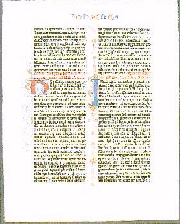Johann Gutenberg and Printing

Luther's 95 Theses and his other works were distributed throughout Germany very quickly. This was the first time printing was used to spread reformatory or revolutionary ideas that were of interest to all classes of society.
Previously, the printing press had only been used for academic texts, for example those dealing with debates or theses; Luther's 95 Theses were actually concieved of in this light.
In 1450, Johannes Gensfleisch the Younger, also called Gutenberg, revolutionized printing. Gutenberg did not invent the printing press, as is often incorrectly assumed; he invented a new printing process.
With this new printing process it was possible to print works quickly and cost efficiently using individual metal letters (single, small metal letters could be placed in rows). These little block letters, which were soon being cast as a series, were reuseable.
-> Hans Lufft, printer in Wittenberg
Further Important Inventions and Discoveries of this Era
- Martin Behaim designed the first globe in 1492.
- Copernicus (1473-1543) developed the heliocentric view of the universe, which was later expanded by Giordano Bruno (1548-1600, who was burned as a heretic)
- Since the 14th century, powder has been used in ammunition.
- Peter Henlein invented the pocket watch in 1500.
- Leonardo da Vinci invented, among other things, a pump and a flying machine.
- Acclaimed sea voyages by European sailors made possible by the new inventions in seafaring and navigation also took place during this time.
- in 1492, Columbus' arrival in the Americas
- in 1498, Vasco da Gama found a sea route to India and
- in 1519-21, Ferdinand de Magelan was the first to sail around the world